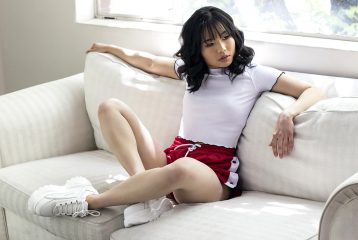The Newbie's Guide to Product Photography
If a image deserves a thousand words, a spectacular product image is worth a thousand website visits. Although I don't have data to back up that declaration (yet), product photography can be extremely useful to your ecommerce website approach.
To reach your target audience members who prefer buying online, you additionally need to provide your audience clear, eye-catching pictures of your items.
Yet product photography isn't as basic as aiming and firing. Even the most standard items need the proper devices, lighting, as well as area to generate gorgeous images that offer consumers right from the purchase page.
6 Product Photography Tips (and Examples) for Taking Pictures That Offer
Here are the tips, instances, as well as products you'll require to efficiently photograph as well as market your items in such a way that makes your site visitors and prospects want to convert.
1. Don't be afraid to utilize your smartphone's electronic camera.
This is the component where I'm expected to persuade you to invest in a premium, 50-megapixel (MP) camera with a 100-millimeter screw-on lens. However I'm not mosting likely to do that.
If you currently have a camera that fits this description, take advantage of it. But also for lots of kinds of items, it's entirely appropriate to fire product photos on a smartphone.
Newer smart devices flaunt effective video camera lenses as well as setups that allow you to optimize your shots for the different types of light and atmospheres you may fire in.
If you require much more persuading, just have a look at Apple's Shot On An iPhone campaign and also the images that have actually arised from it over the years such as this one:
2. Shoot from a tripod for photo uniformity.
Prior to discussing tripods, I'm bound to begin with a primary guideline: Do not prop your phone against something sturdy to intend your lens towards the subject.
It's just also simple for this makeshift setup to glide around throughout the shoot and create inconsistencies in your pictures' appearance. If you relax your electronic camera on, state, a pile of books, simply make sure this plan does not change over the course of the shoot.
There's no injury in holding your camera yourself when firing just a few product pictures for your ecommerce web site. But as your company grows, and also you take extra photos of even more products, it can be difficult to systematize the product's orientation in each photo when shooting handheld.
To make certain consistency throughout your products, you'll require a tripod. And also fortunately, purchasing one isn't constantly the huge, industrial-sized investment it made use of to be.
Here are two kinds of tripods to consider.
Traditional vs. Versatile
This is a practice tripod-- there are conventional tripods readily available for both video cameras and smartphones.
A versatile tripod can be controlled in a number of means. You can bend its legs as well as put it on different surface areas to obtain the angle you need.

Mobile Grasp
There's often a screw on the top of your tripod which connects to your electronic camera to hold it in place. The bottom of the majority of professional-grade cams has a screw opening just for this purpose, yet smart devices can advertising campaign photography utilize the adhering to adapter:
The adapter holds the sides of your mobile phone and also can screw right into either type of tripod, allowing you to operate the electronic camera controls with the phone screen dealing with exterior and towards you.
As soon as you establish which install you'll need, establish it up in front of your product, as well as take into consideration placing three pieces of tape on the ground to mark where you would love to keep each leg of your tripod throughout the shoot.
3. Choose natural light or man-made light.
Never ever undervalue how certain sorts of light can improve (or impede) your product photography. Remember, customers obtain the most effective consider an thing in person, where they can see everything they require to prior to acquiring. The ideal lighting setup assists you disclose those essential decision-making product functions when all internet site site visitors need to go on is a photo.
A single lights setup may not help every product-- a lights setup that benefits some products might compromise the appearance of others.
There are 2 kinds of light you can select as your major source of light: all-natural and man-made light.
Natural Light
All-natural light refers to sunshine-- simple as that. It's additionally known as "soft light" due to the fact that the sunlight casts a bigger, softer series of light than, say, a lamp beaming directly on the product. Ecommerce product shots thrive in natural light if:

The product is shot outside or indicated to be utilized outside.
The product is made use of by, worn on, or shot with a person (people have a tendency to look much better in natural light).You're attempting to emphasize the product's environments, rather than specific features of the product.
Below's an example of a shot using natural light:
Synthetic Light
Synthetic light includes candles, fire, and a lot more commonly, light bulbs. It's additionally referred to as " difficult light" because it generates a smaller but a lot more concentrated light surface. This kind of light caters to products with physical details that require to be highlighted to thrill an on the internet shopper.
As a basic regulation, stick to just one type of light per photo-- all-natural or fabricated. Adding natural light to an unnaturally lit photo can soften a product that's meant to festinate, and also including synthetic light to a normally lit photo can hone a product that's indicated to look soft. You don't wish to enter your very own way.
4. Load or jump your light to soften darkness.
Whether you utilize all-natural light or fabricated light, you'll require to decrease the shadows that any type of prospective hard light casts on the opposite end of a product.
There are three ways to do this:
Fill up Light
Include another, less-intense source of light to supplement your major light. This added light is called your fill light and also is utilized as a counterbalance to soften the natural darkness your primary light generates behind an things.
To do this, place your fill light contrary your main light so your product sits in between both light sources.
Flashbulb Bounce Card
A bounce card, or reflector card, is a small card that "reflects" or "bounces" the primary light back onto the surface below your product to lower shadows.
Some bounce cards connect to the flashbulb of a expert camera lens to diffuse the light from the electronic camera's flash. This card sprinkles a softer light onto the topic from above your collection-- rather than right at it-- so you do not have long darkness trail behind the things you're firing.
Standalone Bounce Card
If you're shooting from a smart device, a flashbulb bounce card isn't an alternative, because you do not have a physical flash you can affix it to. Rather, make your very own standalone bounce card placed contrary your primary light.
For newbies to product photography, this bounce card can effectively change your fill light, which counters the hard light from the cam flash or light that's encountering towards the front of your product.
5. Use a sweep or portrait mode to emphasize the product.
There isn't one appropriate method to position your product, lights, as well as jump cards-- they can change significantly relying on your history. Yet don't choose a history based upon what's simplest to produce. Backgrounds should look like exactly how you desire your buyers to perceive your product when watching it online.
Take into consideration first whether you would certainly such as a white background or a extra dynamic, real-world history. There's an simple way to achieve each one.
White Background: Sweep
For white histories, it's not as straightforward as establishing a table against white drywall. Even mobile phone cams can pick up little acnes on a white wall surface that you wouldn't observe with the nude eye. To capture a best white history without corners or blemishes, use a sweep.
A move is a huge flexible sheet of paper, whose lower serve as the surface underneath your product and after that curves up right into a white wall surface behind the product.
On electronic camera, the move's contour is undetectable, emphasizing essential product details and also enabling the item to own every one of a website site visitor's focus.
Real-World Background: Portrait Mode
Dynamic, real-world backgrounds are very appealing when capturing items that have a certain use or are being designed by a individual-- as you saw aware of the brief-case earlier in this overview.
However, it's very easy for a real-world background to take the focus of the photo, making it unclear which item in the photo you're in fact marketing.
Provide your product deepness as well as emphasis with portrait setting, a image setting on many specialist cams, and also offered on lots of new smartphones. This setting blurs the history so the context of the product is clear yet not completing against the product itself.
Below is a very awesome photo of a HubSpot pen taken in portrait setting on a Google Pixel 2 (I took this image myself). You can tell the pen remains on a workdesk with a computer behind it, but the pen is still the focal point for viewers:
6. Shoot a range of images.
My last ecommerce photography pointer to you is to not quit at one photo per product. Equally as your customers look, hold, use, and also also try out merchandise in a shop, your internet site should fire a selection of images to imitate this very experience.
If you're firing garments, for instance, record the garment of garments alone-- that is, expanded on a white surface-- along with on Campaign Shoot a mannequin whose shade contrasts the color of the product.
After that, for extra photos, have the apparel modeled on a person, enabling you to take images of the product from the individual's different poses as well as angles.
Product Photography Set Up
Next off, allow's summarize what we just received-- right here's a checklist of quick product photography set-up tips that you can refer to and also share on your team:
• Decide on a cam-- whether that suggests using your smartphone.

• Choose natural or man-made lighting-- think about which choice is best for your product and environment.
• Determine whether you'll fill or bounce light.• Select sweep or portrait setting.
• Take several different pictures to provide your visitors range.
Get Started With Your Product Photography
Do not feel required to invest in every tip and also piece of equipment at once. Use these product photography ideas slowly to see what makes your store look the most nice, and change your method as your photography chops get better.